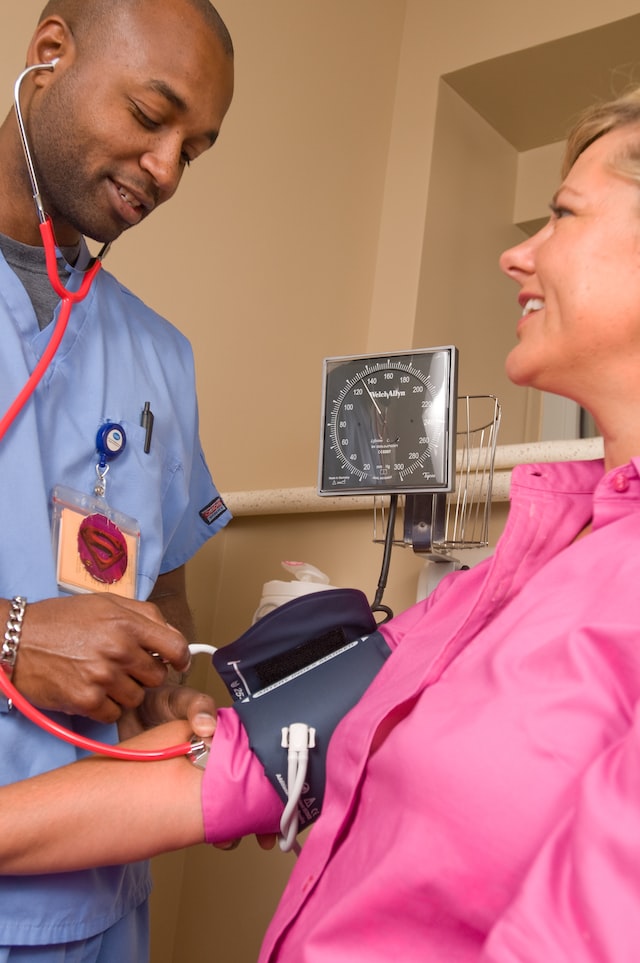“The Basics of Taking Vital Signs: A Guide for Nurses”
Step #1: Checking TemperatureÂÂÂ
Temperature is a crucial vital sign for Canadian nurses. Non-contact thermometers are now commonly used to measure temperature and detect health issues such as infections and fevers. Normal body temperature for adults is 37°C (98.6°F) but may vary based on age and health. It’s important for nurses to follow infection prevention protocols during temperature taking with non-contact thermometers.
Step #2: Measuring Blood Pressure
Blood pressure is an indicator of the force of blood against the walls of the arteries. It is measured in mmHg and is expressed as two numbers, systolic and diastolic pressure.
To measure blood pressure, a blood pressure cuff is placed around the upper arm and inflated to compress the brachial artery. The pressure is released gradually while the nurse listens to the blood flow with a stethoscope. The first sound heard is the systolic pressure, and the last sound heard is the diastolic pressure.
It is important to use the proper size cuff and to ensure the patient is relaxed and comfortable while taking the measurement.
Step #3: Measuring Heart Rate
Heart rate, or pulse, is the number of times the heart beats in a minute. It is an important indicator of cardiac function.
To measure heart rate, the nurse places two fingers (usually the index and middle fingers) over the radial artery at the wrist. The nurse counts the number of beats for 15 seconds and multiplies that number by four to get the heart rate in beats per minute (bpm).
It is important to avoid pressing too hard, which can impede blood flow, or pressing too lightly, which can make it difficult to feel the pulse.
Step #4: Measuring Respiration Rate
Respiration rate is the number of breaths taken in a minute. It is an important indicator of respiratory function.
To measure respiration rate, the nurse counts the number of breaths in one minute while observing the rise and fall of the patient’s chest.
It is important to ensure that the patient is relaxed and breathing normally while taking the measurement.
Accurate and consistent measurement of vital signs is a fundamental part of nursing. By understanding the basics of taking vital signs, nurses can monitor the health of their patients and detect any changes that may indicate a health issue.



